Trapeze artists, clowns, elephants… the exotic magic of the circus has long been a part of the American tradition. These colorful Saturday Evening Post illustrations capture the spirit of the Big Top.
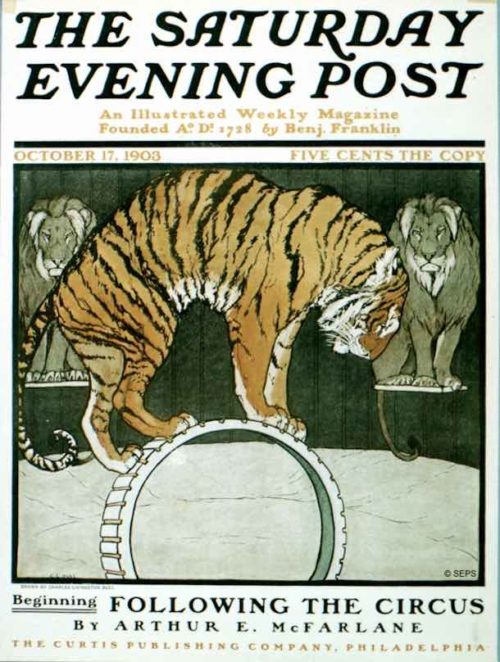
Charles Bull
October 17, 1903
Charles Bull painted dozens of covers featuring animals — cows and cats, owls and eagles, deer and dogs — for The Saturday Evening Post and its sister publication, Country Gentleman. This was his only cover showing animals at the circus.
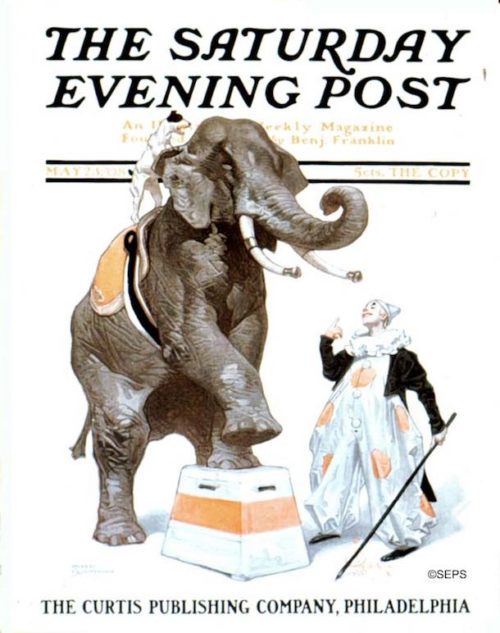
J.C. Leyendecker
May 23, 1908
Leyendecker painted six circus-themed covers for the Post, most of which featured the majestic elephant. That little black and white dog must have been Leyendecker’s muse, appearing on at least 16 of his Post covers.
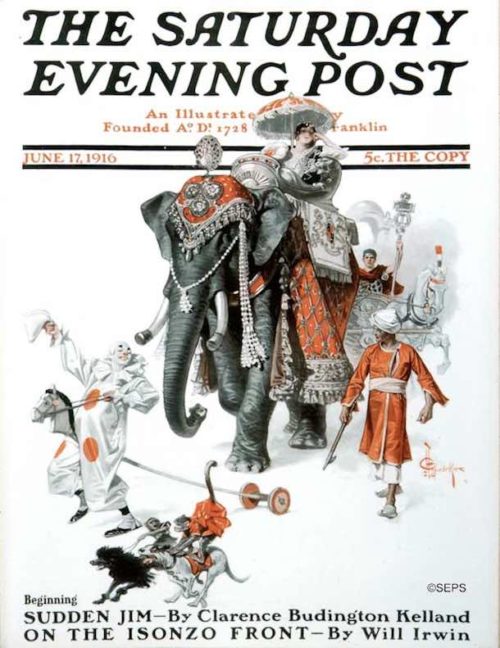
J.C. Leyendecker
June 17, 1916
Our art critic, David Apatoff, notes that the original paintings that were reproduced on the cover of the Post were far larger than the magazine — sometimes four or five times larger. And they were painted with oil paint on canvas, just like fine art in the greatest museums. Often, Post cover artists had been trained in a classical fine art tradition. Leyendecker, for example, trained in Paris at the Académie Julian. For more on this particular painting, read Apatoff’s article, The Hidden Talent of Post Cover Artists.
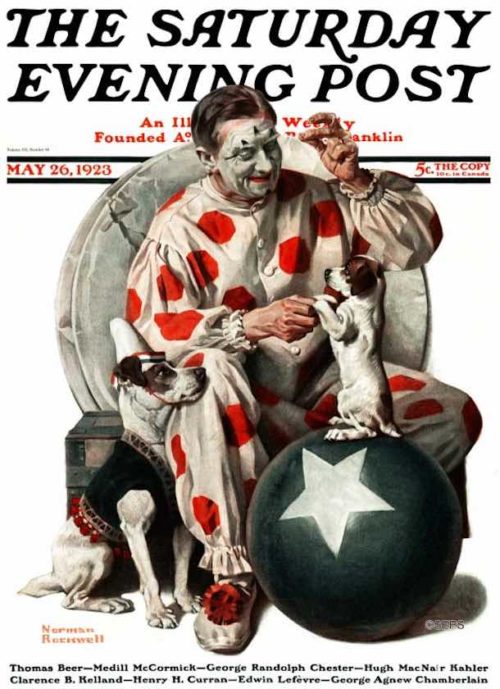
Norman Rockwell
May 26, 1923
A look behind the scenes at the big top reveals the house of disciplined practice that result in a show that delights the circus-goers in the ring. The pup learns his lesson under the stern eye of the older dog, who manages a degree of dignity despite the absurdity of the costume.
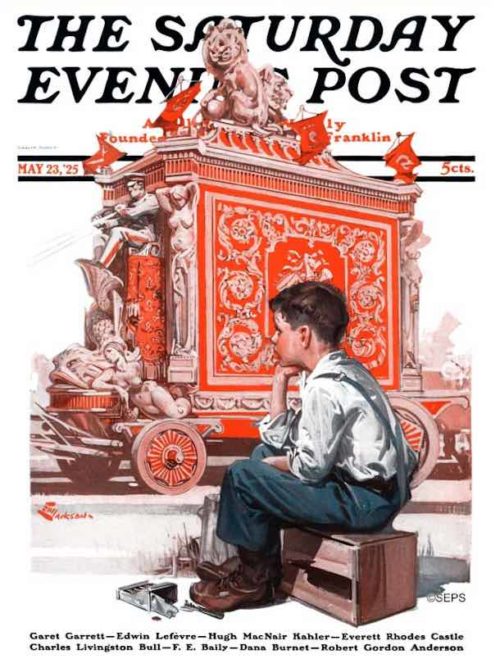
E.M. Jackson
May 23, 1925
These music-making “steam pianos” were often seen on riverboats and in circuses. Most had 32 whistles. The sound will be forever associated with the circus.
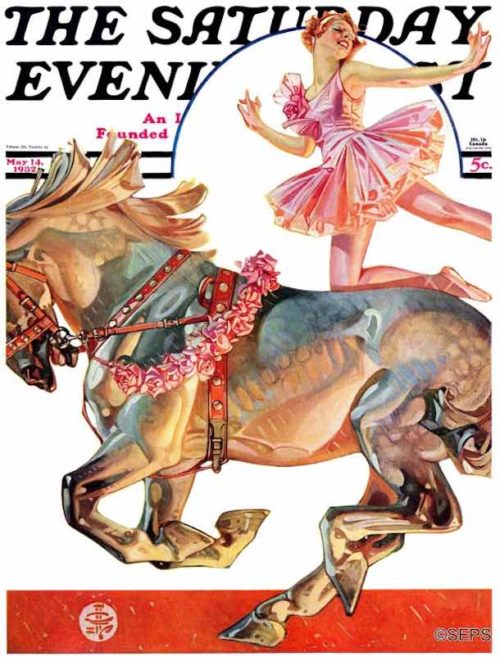
J.C. Leyendecker
May 14, 1932
Leyendecker masterfully captures the tension between the muscular strength of the horse and the delicate balancing act of the rider. The horse reflects the astonishing colors of the circus around him.
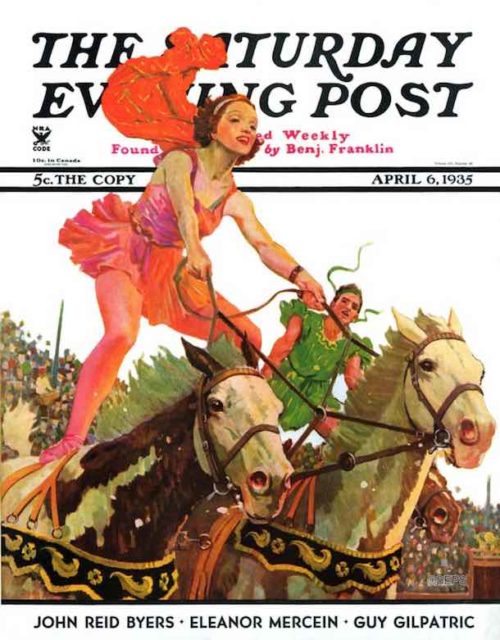
Maurice Bower
April 6, 1935
Maurice Bower offers another view of circus horses and riders. Horses were a favorite subject of Bower’s; he painted numerous covers featuring them pulling stagecoaches, sulkies, and firetrucks.
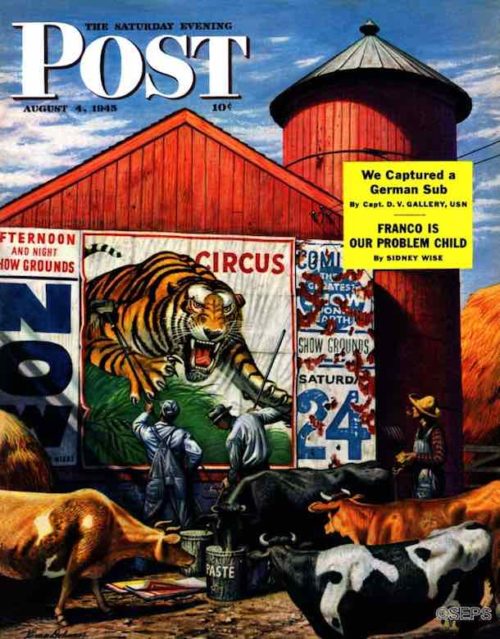
Stevan Dohanos
August 4, 1945
Stevan Dohanos showed that circuses meant palate-tickling excitement to cows too. Poster paste — a succulent mixture of flour and water, and copper sulphate to keep it from souring — seems to be the bovine equivalent of a dry martini. The two Ringling Brothers Barnum and Bailey bill posters, Bill Feigley and Bob Aikens, who consented to pose for Dohanos, kept a wary eye on horned kibitzers while covering previous circus posters with their own particular brand.
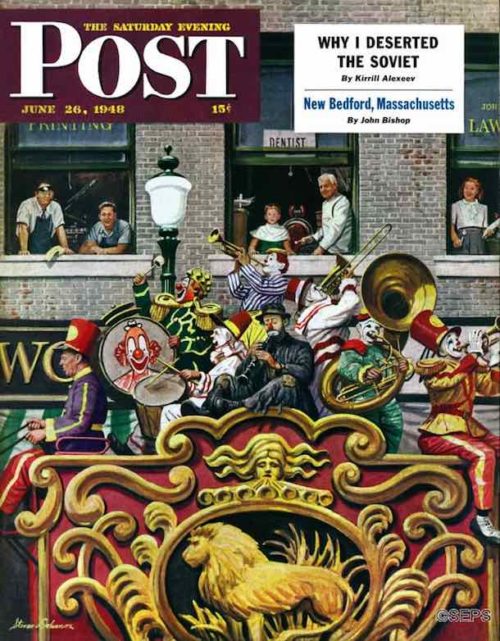
Stevan Dohanos
June 26, 1948
Stevan Dohanos painted the big parade down Main Street, once a standard feature of that great summer day, The Day the Circus Came to Town. “Circuses don’t parade much anymore,” said the artist in 1948, “but I think it’s a grand old custom and I wish I could help restore it.” The clowns were members of the famous Ringling Brothers-Barnum and Bailey team, with the sad-faced Emmett Kelly pretending to play the clarinet. The clowns posed for Dohanos in the back lot behind Madison Square Garden, between performances in New York.
Become a Saturday Evening Post member and enjoy unlimited access. Subscribe now
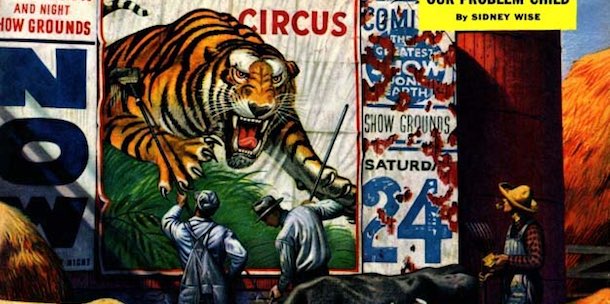

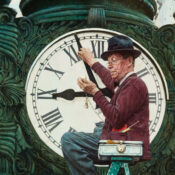
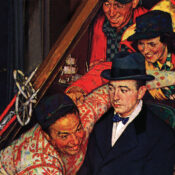
Comments
Such great covers, all of them. I’m very glad that the circus is evolving and all animals still used in acts will be treated with respect and dignity!
I’ll have to keep my eye out for the little black and white dog on Leyendecker’s covers. Hopefully it was his own dog! The older dog on Norman Rockwell’s 1923 absolutely maintained his dignity, despite the absurdity of the costume—-no question about it.
I wish dogs on magazine covers had not gradually disappeared after World War II. Please keep the animal covers ‘alive’ on this site and in the magazine, as you have over the past few years.